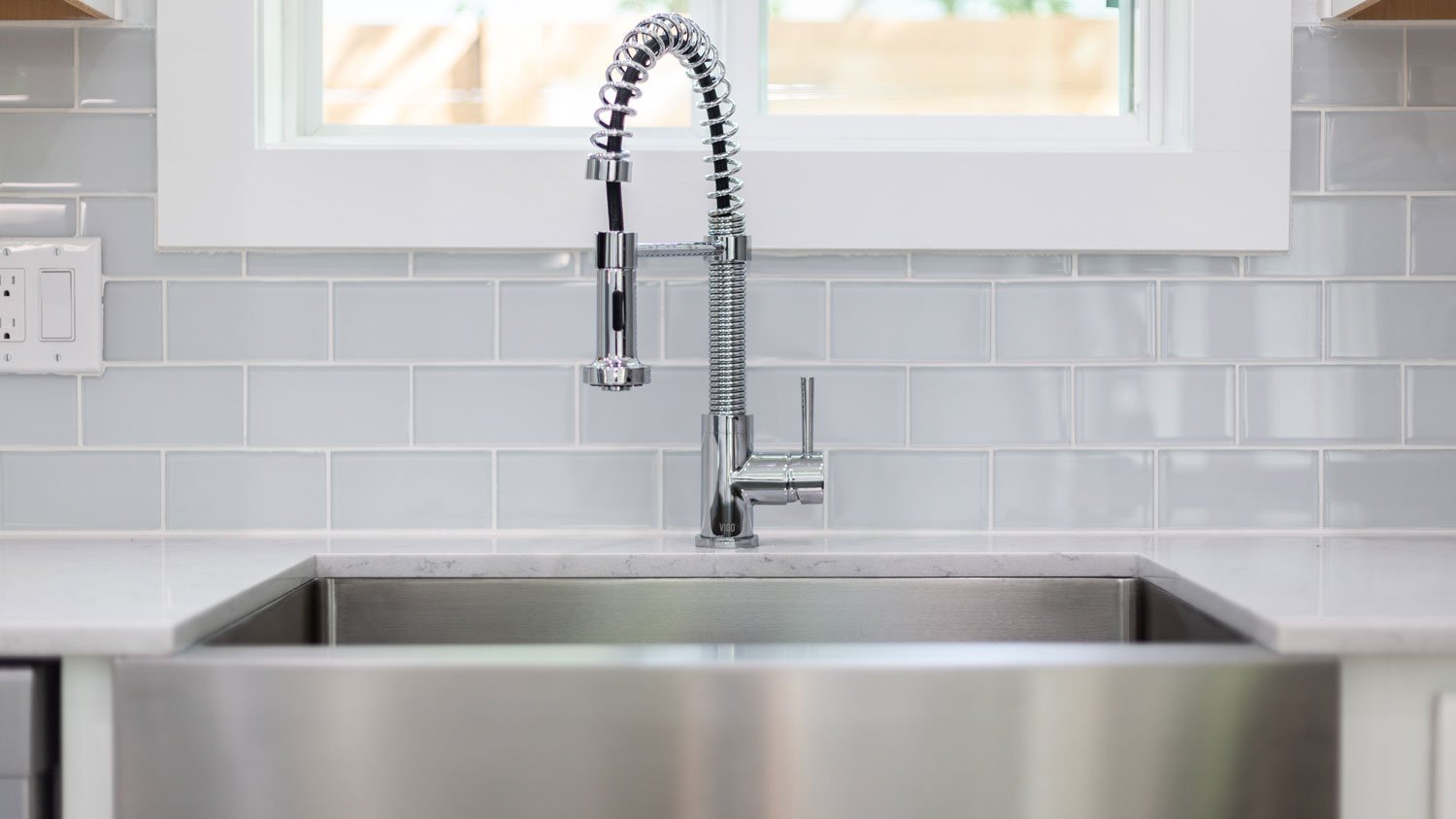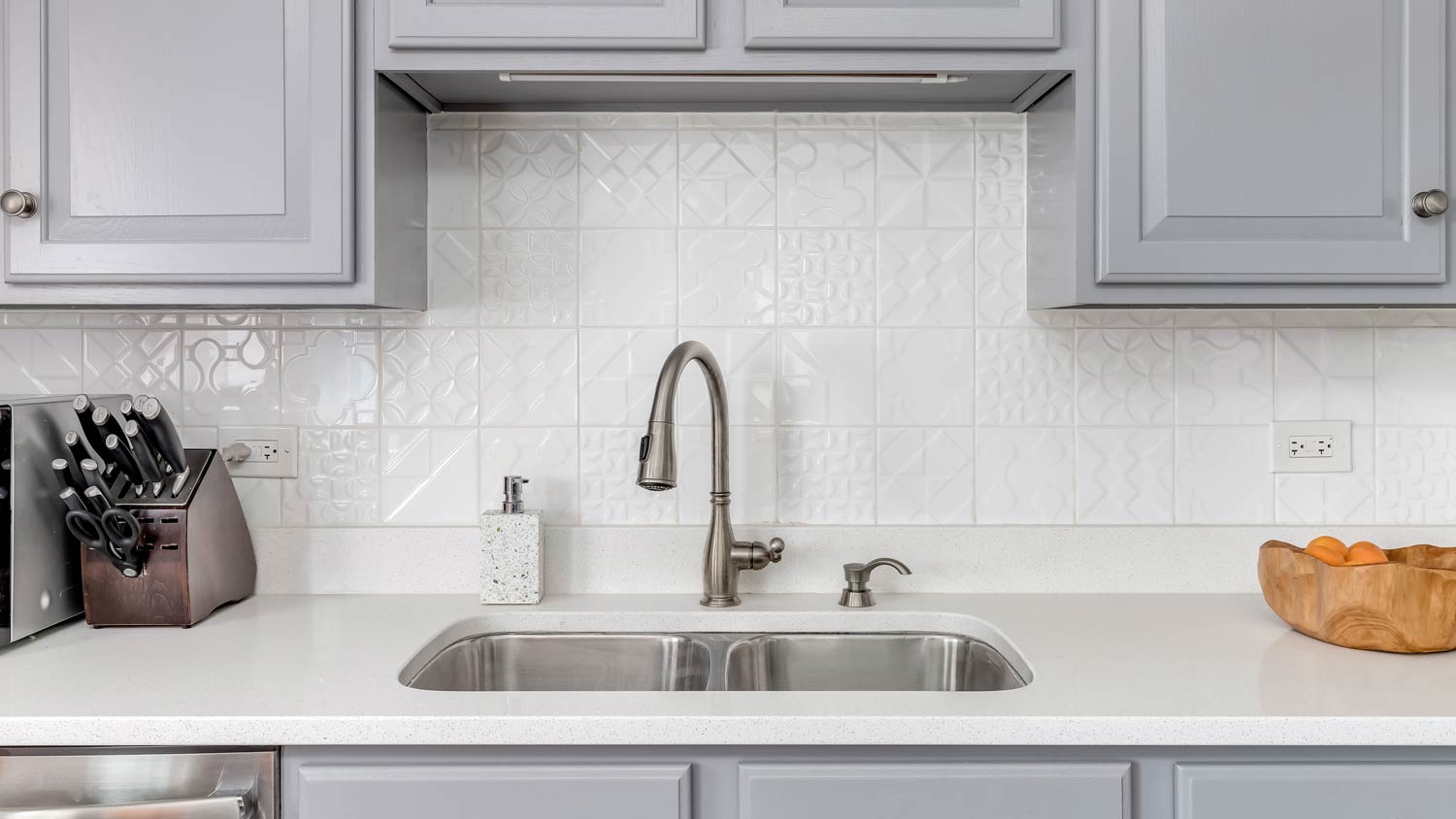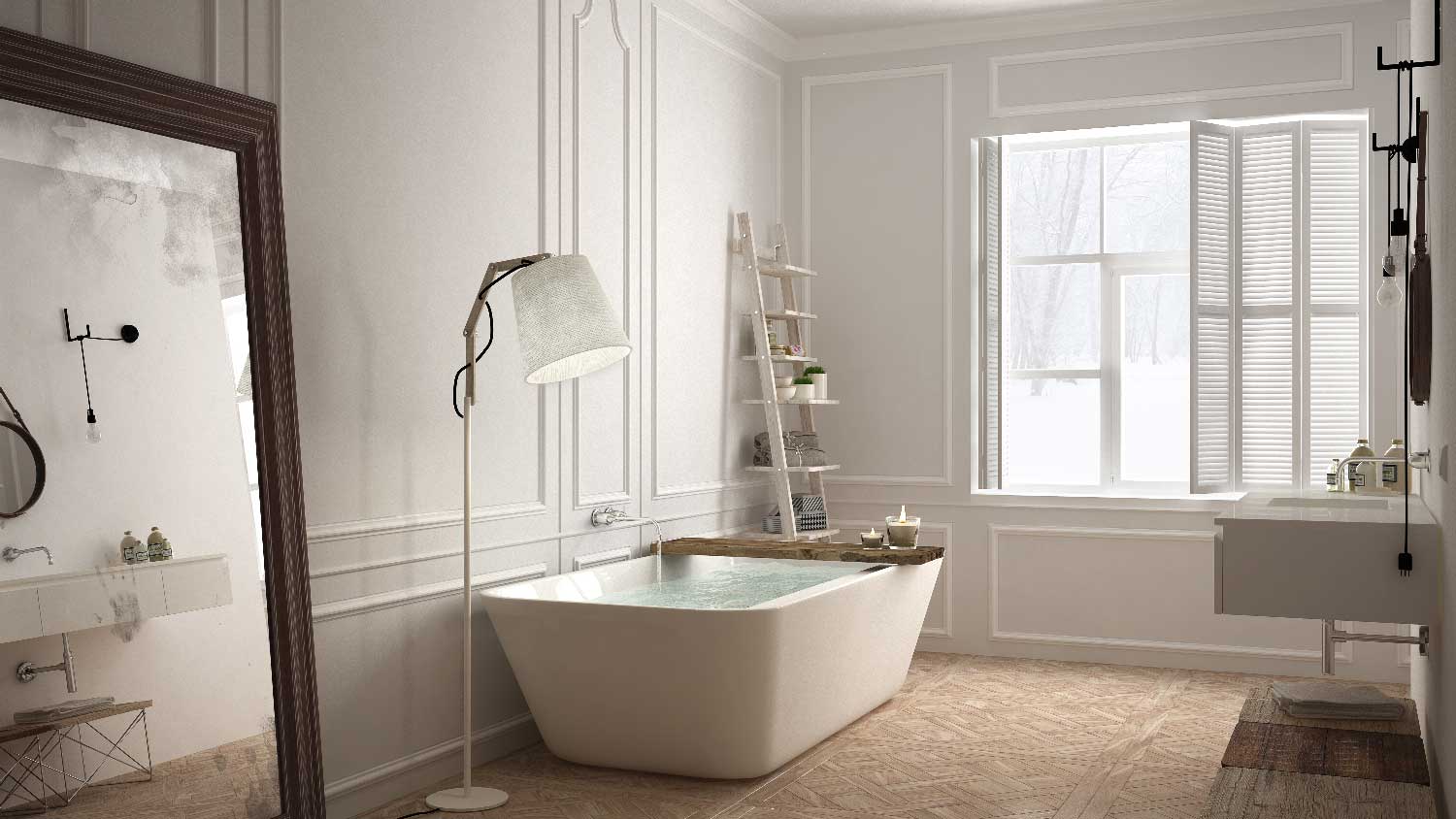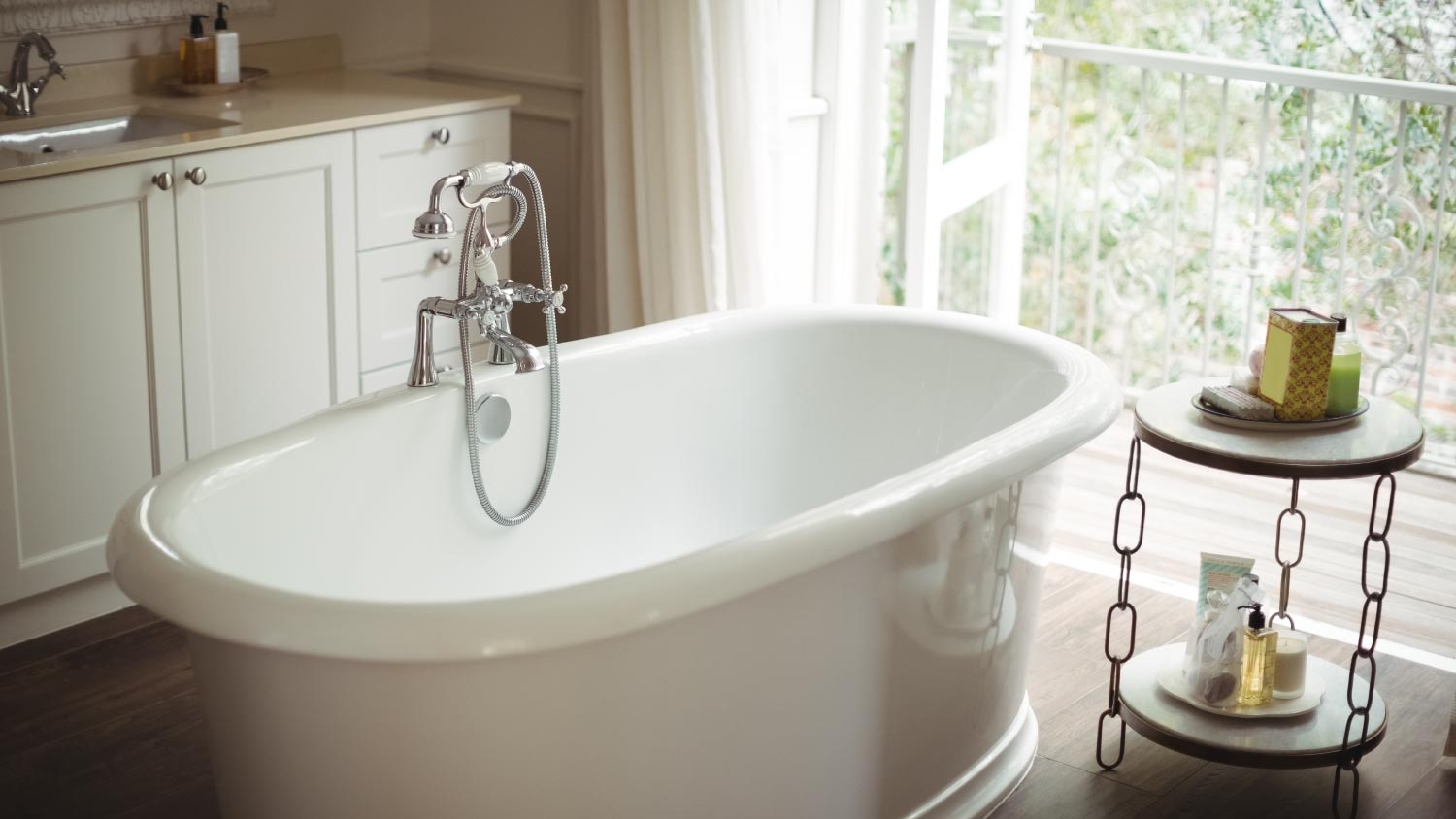
Building a laundry room addition to your home adds value and functionality. Your laundry room addition cost will depend on size, materials, and other factors.
Let us do the thinking before sinking cash into a new sink


Both fireclay and stainless steel sinks are relatively easy to maintain.
Stainless steel is an affordable sink option that’s easy to install.
Fireclay sinks are highly durable and nonporous, but cost a bit more.
If you're ready to buy a new kitchen sink, you may be overwhelmed by all the options. The best kitchen sink material will primarily come down to your taste, budget, and commitment to ongoing maintenance. Before considering kitchen sink sizes or styles, you must also narrow down the sink's material.
Ready to get your hands wet? Let's dive into the pros and cons of a fireclay vs. stainless steel sink in your kitchen.
The main difference between a fireclay sink and a stainless steel sink is that the former is made of clay, whereas the latter is made of—you guessed it—stainless steel. However, the differences between fireclay and stainless steel sinks don't end there.

Fireclay sinks come from the world of ceramics, similar to ceramic or porcelain sinks. Starting as clay, they’re molded into a sink form, then fired at a high temperature and coated with enamel to become a durable, stylish, and heat-proof sink. They’re easy to maintain and are typically priced between $600 and $1,400.
| Pros | Cons |
|---|---|
| Durable | Expensive |
| Nonporous | Hard surface |
| Design-minded | Limited selection |
Best for:
Style-conscious homeowners seeking their “forever home.”
Careful dishwashers.
A mix of high-design and low-maintenance.
Fireclay sinks are durable, with a tough enamel coating that’s more resistant to scratches and chipping than a porcelain sink. Plus, their density and enamel coating means the surface is nonporous, blocking odors and mold. Fireclay sinks are also incredibly heat-resistant.
Because they are so dense and heavy-duty, you’ll want to hire a sink installer near you to properly brace the cabinet and avoid breaking the sink. While that dense material is great for withstanding heat or dings, it also means dropped dishes and cups are likely to chip or break if they're dropped in the sink.
Over time and without the proper care, fireclay sinks can grow brittle and chip. And because of their handcrafted nature, fireclay sinks' color selection and style are limited.

Stainless steel is a timeless classic for kitchen sinks. It’s resistant to stains and rust, and doesn’t require complicated upkeep. It’s no wonder close to 70% of kitchen sinks are made of stainless steel. They’re also a moderately-priced option, as stainless steel sink installation costs $200 to $1,500 on average.
| Pros | Cons |
|---|---|
| Low-maintenance | Water spots |
| Affordable | Scratches |
| Various styles | Noisy |
Best for:
Budget-conscious buyers.
Clumsy dishwashers.
Homeowners who want a low-maintenance sink.
With a few simple steps, keeping a stainless steel sink clean is simple. Most of the time, all you’ll need is dish soap and a sponge. They’re also so popular that you’ll find them in many different styles and layouts, including single and double sinks to suit your needs without breaking the bank. Even if you don’t like the look of stainless steel, newcomers to the market like black stainless steel, which has similar maintenance with a modern look.
Stainless steel shows water spots very easily, so you’ll want to make a habit of wiping it down daily to keep it looking bright and shiny. But, proceed with caution when it comes to cleaners, anything too harsh or abrasive can scratch the sink. It’s also notable that stainless steel is one of the noisiest sink materials, making dishwashing a loud chore.

Now that we’ve gotten our hands dirty with the details, let’s see where which sink washes out the other.
Stainless steel sinks are some of the most affordable sinks out there, beating out fireclay sinks by a margin. The most basic stainless steel sink starts at about $200, whereas fireclay sinks start at $600 and are harder to install, adding to labor costs.
A pristine, white apron-style fireclay sink screams classic farmhouse elegance. Adding a fireclay sink to your kitchen will elevate the look overall. On the other hand, stainless steel is more run-of-the-mill—it won’t take away from your design, but it’s unlikely to add anything.
Fireclay sinks come in limited options and colors. Basically, you have a choice of white, black, or gray. While stainless steel sinks are always steel, you can buy a variety of sizes and designs to suit your needs. You won’t find the same options and customizations in fireclay sinks.
If water spots drive you up a wall, avoid stainless steel sinks. While both materials are relatively easy to maintain, you’ll need to wipe down your stainless steel sink on a daily basis to keep it from looking spotty. With a fireclay sink, you won’t run into the same issue.
If you’re handy around the home, installing a stainless steel sink on your own in an afternoon is achievable. But, you’ll want to bring in the pros to tackle a fireclay sink install. For one thing, these dense sinks are super heavy and you could drop and crack the sink during the installation. You’ll also need to make sure the sink is properly braced for its weight. If you don’t, you risk ripping out the plumbing and the countertop in the process.
While there might not be a direct ROI, a well-maintained fireclay sink in a kitchen is certain to draw more attention than a stainless steel sink. Its high-end and unique feel creates a one-of-a-kind image that could be a major selling point in the future.
Both stainless steel and fireclay sinks are simple to maintain. Avoid harsh chemicals and abrasives so you don’t scratch the surface, but both will be just fine with dish soap, vinegar, and a sponge. Neither require coating or special attention to keep them in good shape.
If you take proper care of stainless steel or fireclay, they can last a lifetime. Just keep up with regular maintenance and prevent rusting or scratches on a stainless steel sink. Stay on top of routine cleanings and gentle care to keep your fireclay sink from staining or chipping.
Very professional, polite and helpful. I would recommend him!
Raven and crew does absolutely fantastic job. They are very professional if any concerns were to occur with any of her work she always took responsibility and finished out with a great job. I have worked with her business for a year and have always been satisfied. Very trusted business and...
I had Ace Fireplace Services install custom chimney caps for my home, and the results are stunning. They fit like a glove and have added a touch of sophistication to my chimney. I can't recommend their services enough.
Custom Paint Jobs LLC turned our outdated bathroom into a modern masterpiece.
Very professional and efficient with work. Answered each question I had with great knowledge and an informative response. Will be working with them again.
Window Depot did an amazing job on my deck. I wasnt sure what I wanted to do, but their composite decking was affordable and will last a long time. I am excited to have family over, and I am no longer embarrassed by my backyard. Jeff and the ground crew were polite, respectful, and caring for...
Great tree company, very professional and honest. Glad we found them, they had the best pricing
Maple Tree Service should serve as a mentor for other business! Customer service was superior and beyond expectation. Response to request was prompt. The representative was very courteous and proud of the company. Quote was given during initial visit and work date established. A follow up...
Eugene returned my call within minutes and was able to complete the job within a couple of days. Friendly and professional, and I feel his prices are reasonable.
We used Unique Hardwood Floor LLC three years ago to work on the floors of a 70 year old home that needed a great deal of work. Some floors needed repairs, some were replaced and others just needed to be refinished. It was a complicated job as they needed to blend the old and the new to...
From average costs to expert advice, get all the answers you need to get your job done.

Building a laundry room addition to your home adds value and functionality. Your laundry room addition cost will depend on size, materials, and other factors.

Do you want to add a mudroom to your home but are unsure if it’s within your budget? Use this mudroom addition cost guide to determine your installation price range.

Remodeling your bathroom can add significant value to your home. Your bathroom remodel cost in Columbus, OH will depend on size, fixtures, materials, labor, and other factors.

There are eight common shower pan sizes, which vary based on the shape of the shower. If you want a shower in a unique size, you can custom order a shower pan.

An updated bathtub can give a bathroom a whole new look. Find out how much it costs to replace a bathtub in Minneapolis, MN, including prices by type and labor costs.

An updated bathtub can give a bathroom a whole new look. Find out how much it costs to replace a bathtub in Los Angeles, CA, including prices by type and labor costs.